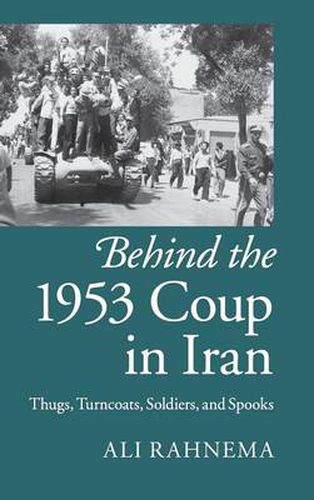Readings Newsletter
Become a Readings Member to make your shopping experience even easier.
Sign in or sign up for free!
You’re not far away from qualifying for FREE standard shipping within Australia
You’ve qualified for FREE standard shipping within Australia
The cart is loading…






Ali Rahnema’s work is a meticulous historical reconstruction of the Iranian coup d'etat in 1953 that led to the overthrow of Mohammed Mosaddeq and his government. Mosaddeq’s removal from power has probably attracted more attention than any other event occurring during his tenure because of the role of foreign involvement, the political, economic and social impact on Iran, and the long-term impact the ousting had on Iran-US relations. Drawing on American, British and Iranian sources, Rahnema closely examines the four-day period between the first failed coup and the second successful attempt, investigating in fine detail how the two coups were conceptualised, rationalised and executed by players on both the Anglo-American and Iranian sides. Through painstaking research into little-studied sources, Rahnema casts new light on how a small group of highly influential pro-Britain politicians and power brokers revisited the realities on the ground with the CIA operatives dispatched to Iran and how they recalibrated a new, and ultimately successful, operational plan.
$9.00 standard shipping within Australia
FREE standard shipping within Australia for orders over $100.00
Express & International shipping calculated at checkout
Ali Rahnema’s work is a meticulous historical reconstruction of the Iranian coup d'etat in 1953 that led to the overthrow of Mohammed Mosaddeq and his government. Mosaddeq’s removal from power has probably attracted more attention than any other event occurring during his tenure because of the role of foreign involvement, the political, economic and social impact on Iran, and the long-term impact the ousting had on Iran-US relations. Drawing on American, British and Iranian sources, Rahnema closely examines the four-day period between the first failed coup and the second successful attempt, investigating in fine detail how the two coups were conceptualised, rationalised and executed by players on both the Anglo-American and Iranian sides. Through painstaking research into little-studied sources, Rahnema casts new light on how a small group of highly influential pro-Britain politicians and power brokers revisited the realities on the ground with the CIA operatives dispatched to Iran and how they recalibrated a new, and ultimately successful, operational plan.